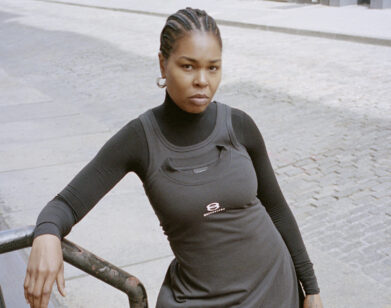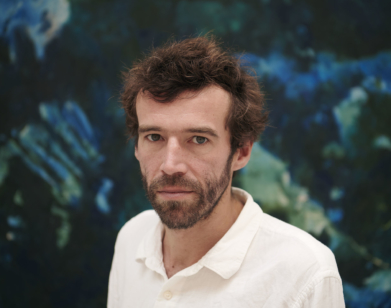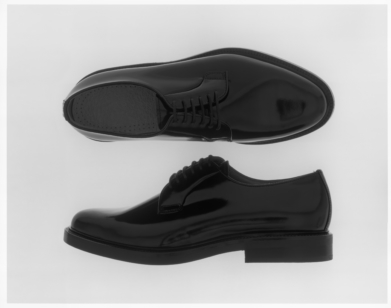art!
Meet Kandis Williams and Her Dancing Bodies
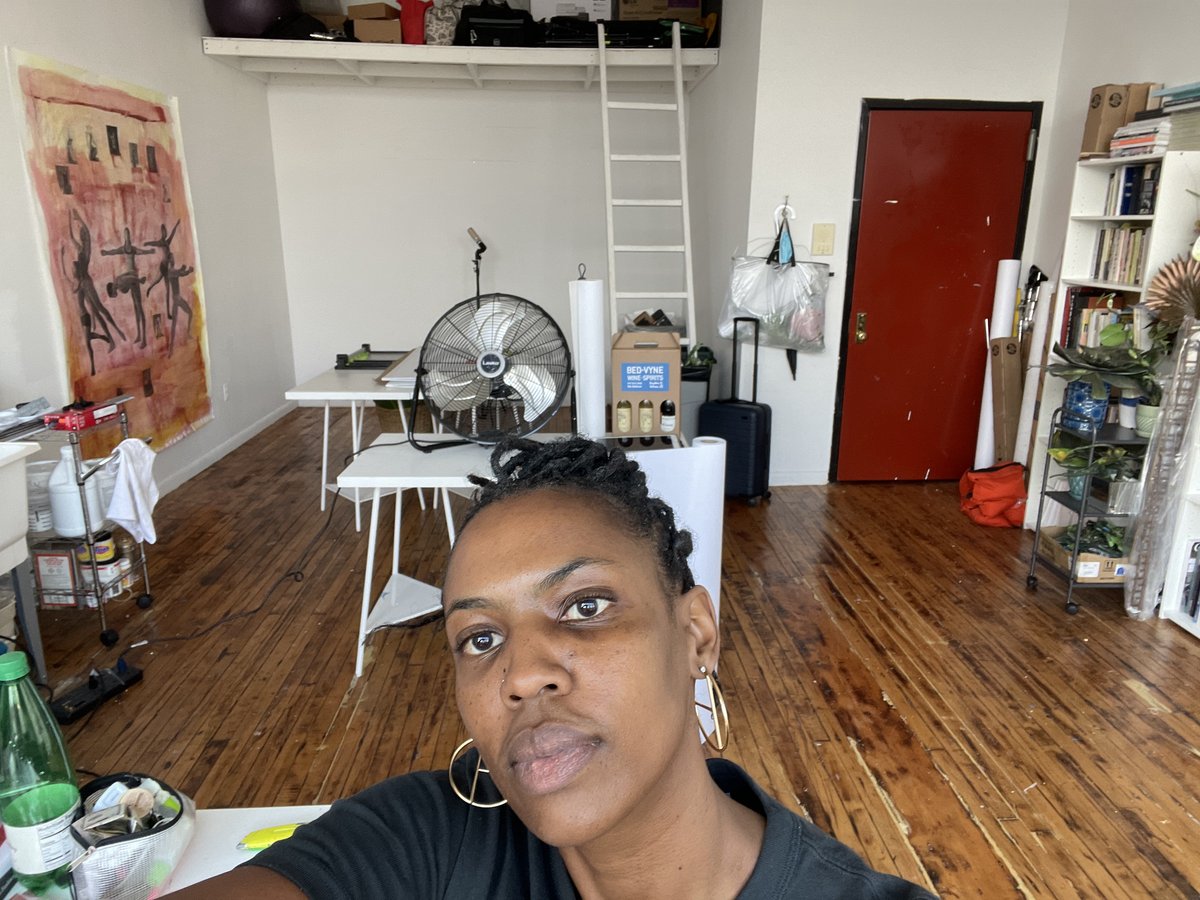
In the eyes of Kandis Williams, no dancing body is innocent. Every one is a vessel, according to the Baltimore-born artist, loaded with political and cultural significance. Deciphering the movements of the waist, hips, groin, or solar plexus, for example, can enable us to read a body like a book—or at least offer us a glimpse into its cultural origins, its motivations, and its status as controller or controlled. Through a versatile practice that spans collage, performance, video, assemblage, and installation, Williams has made it her mission to deconstruct and re-present the racial history of dance and choreography as one rich in semiotics. Taking the likes of the Tchaikovsky ballet, the Ballet Russe de Monte Carlo, the Dance Theatre of Harlem, and the Alvin Ailey American Dance Theatre as its subjects, the Los Angeles-based artist’s work explores the ways that Black bodies have shaped ballet, and in turn, how ballet has impacted the Black body.
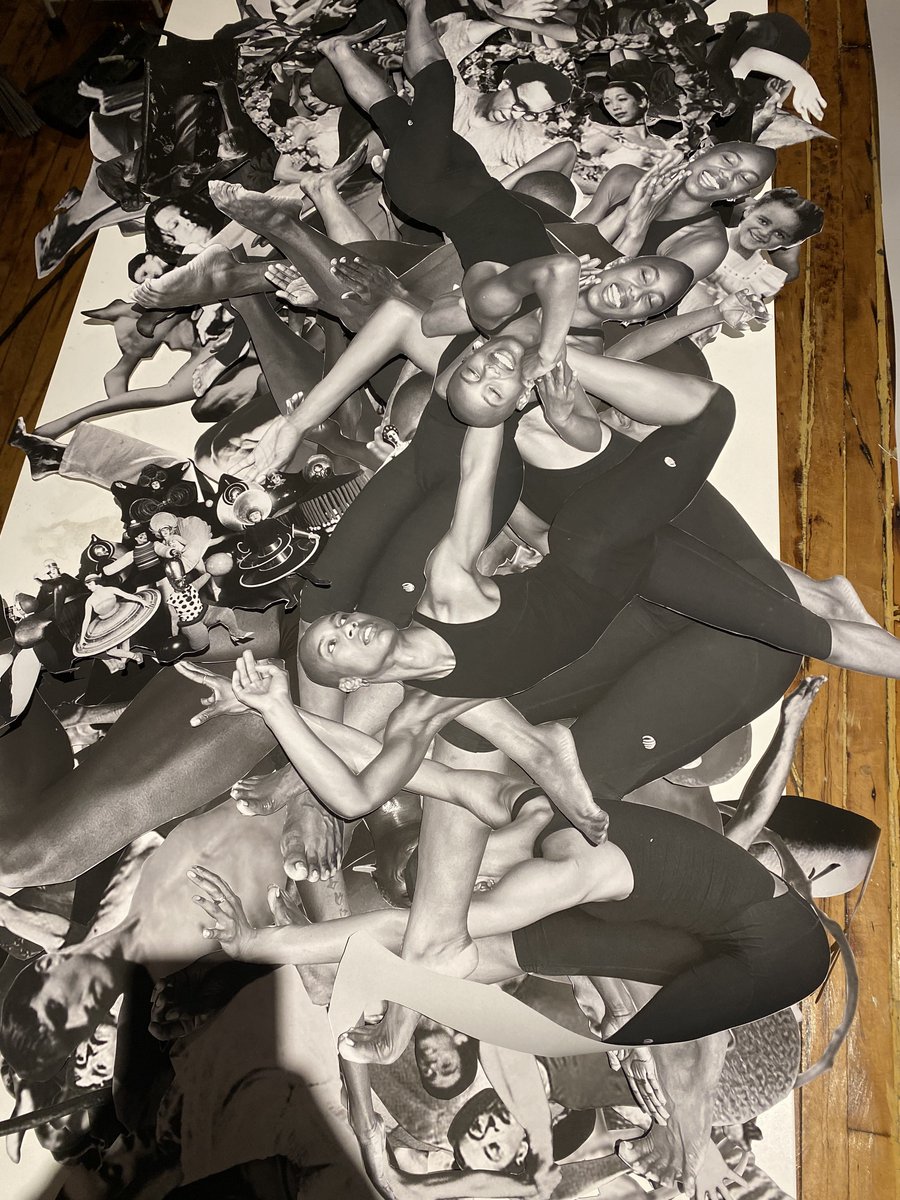
This winter, Williams opened A Line, her first solo show in New York and the inaugural exhibition at 52 Walker, the brand new David Zwirner gallery space. To mark the occasion, Williams talked with Interview about her favorite pieces in the exhibition, the relationship between the ballet and the Black body, and the motivation behind her multimedia practice.
———
A Lift and a Kick conflated
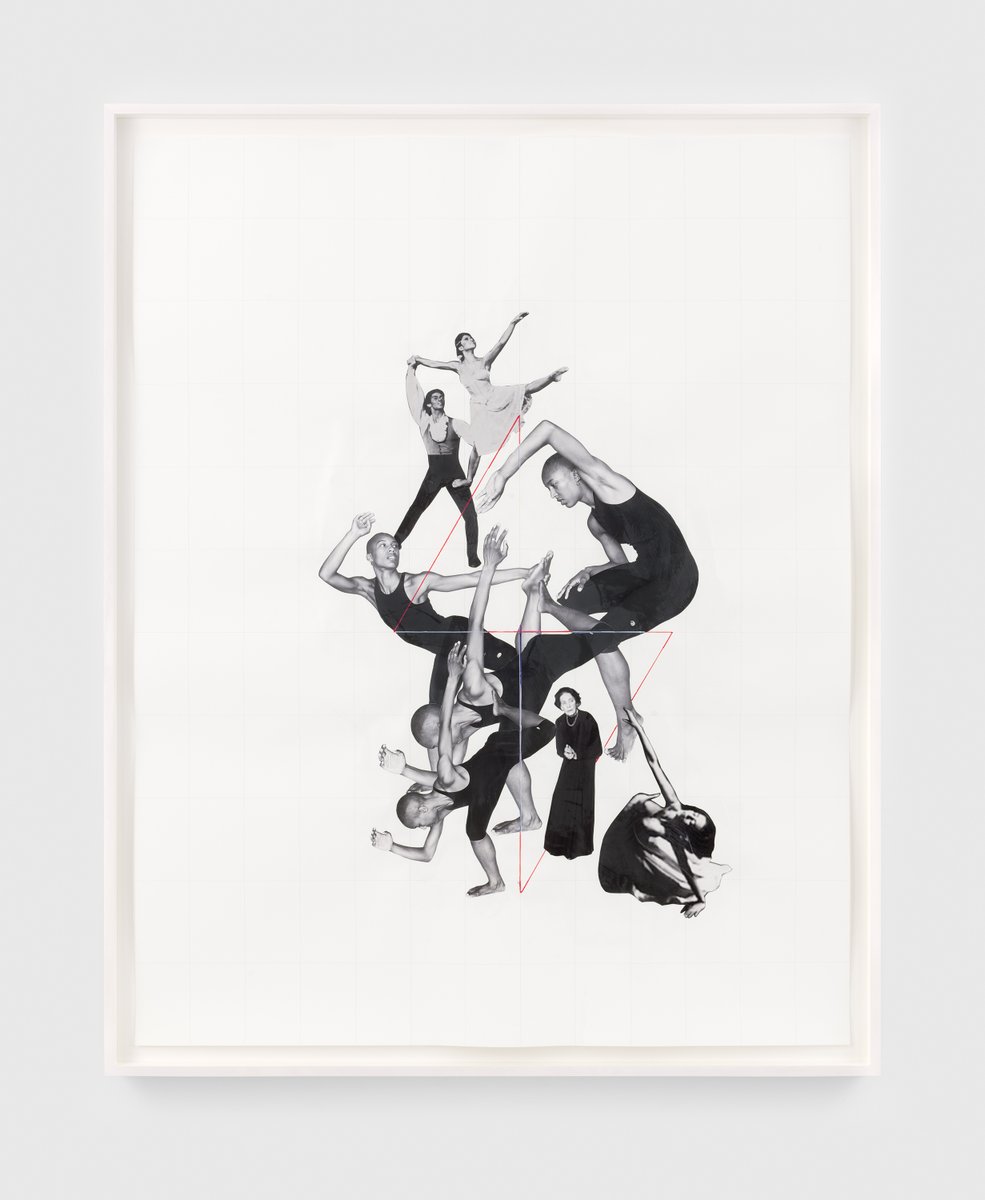
Kandis Williams, A Lift and a Kick conflated, 2021. © Kandis Williams. Courtesy the artist and 52 Walker, New York.
“This piece is about the territory of the waist. I’m interested in this space because of the territorialization of the solar plexus, and the almost antithetical connotations of the hips and the groin that are built into the canon of European dance theorization. This almost always belies anti-Black sentiments.”
———
Line intersection Sublimation: Uptown Downtown satisfactions of Swan Lake
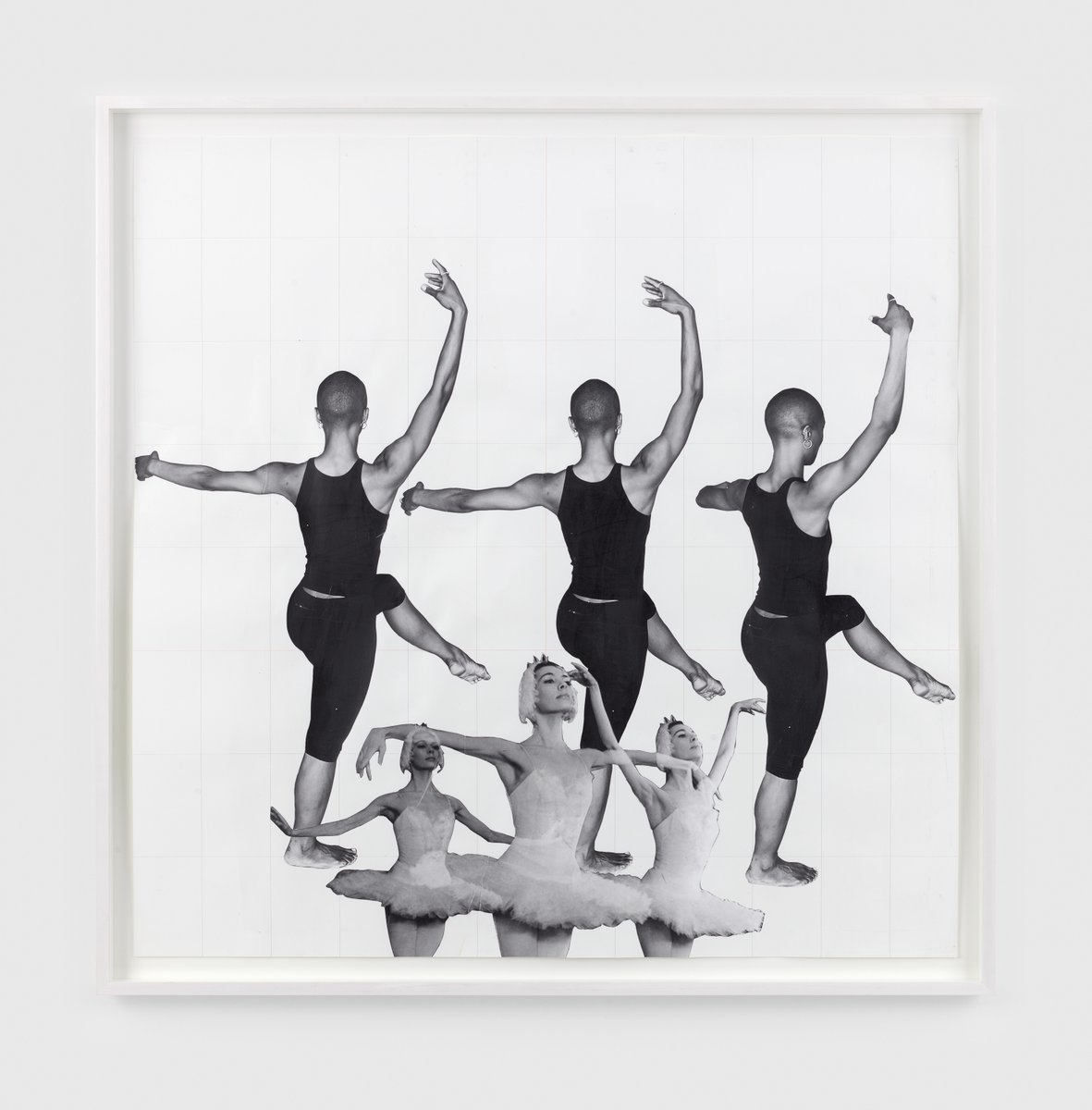
Kandis Williams, Line Intersection Sublimation: Uptown Downtown satisfactions of Swan Lake, east west Pavlova to Mezentseva, Madonna Whore Balanchine to Dunham, 2021. © Kandis Williams. Courtesy the artist and 52 Walker, New York.
“This is one of my favorite works in the show, and the product of my earliest research. It’s about two things. First, it explores the external forces that are in operation regardless of the dancer’s interpretation of the choreography—the nature of the choreography itself, or the way that the dancing body is received in greater culture. Secondly, it explores the ways that certain popular ballets and their fairytale fictions have shaped popular discourse and taken on mythic or iconic proportions. Swan Lake, the Tchaikovsky ballet from the 1870s, was very unpopular in its first season, but reached extreme popularity in the 1960s. In that era, the black swan and the white swan became a placeholder for good and evil, control and domination. It’s a really interesting myth on-stage and off-stage, one that creates a forceful vision of white femininity by implicitly drawing on metaphors of race.”
———
Triadic Ensemble: stacked erasures, Russes de Monte Carlo, Harlem Dance, Wigman and Duncan
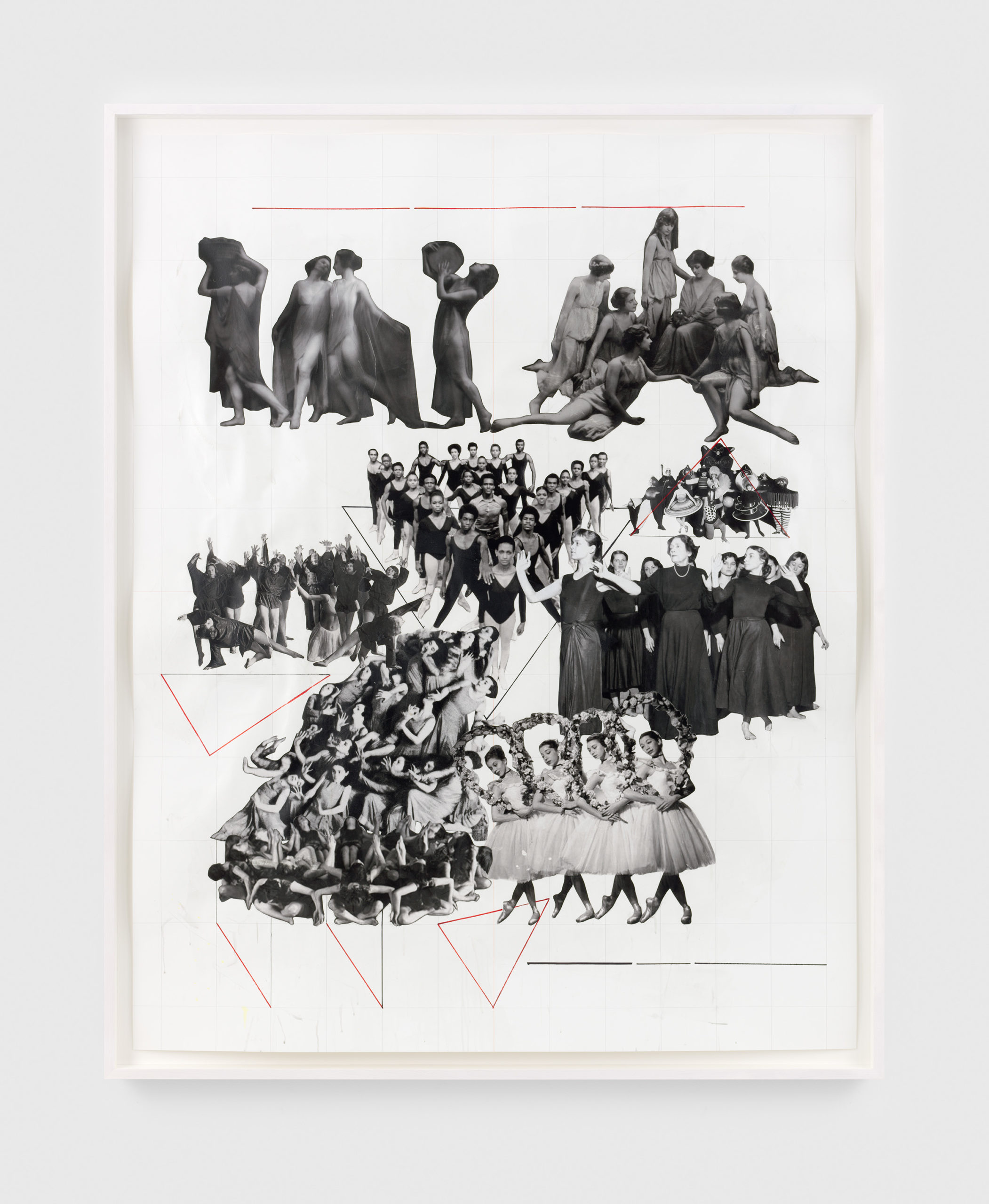
Kandis Williams, Triadic Ensemble: stacked erasures, Russes de Monte Carlo, Harlem Dance, Wigman and Duncan, 2021. © Kandis Williams. Courtesy the artist and 52 Walker, New York.
“This piece is a stack of dance troupes. I was thinking about the ensemble as a hierarchy in Western dance. The dance company becomes a collection of certain physiques and aesthetics, and the visual consequences of that are the presence of the white-femme and Black-masc body—they are read in terms of collective traits. It was interesting thinking about the Harlem Dance Ensemble as a powerful and influential ensemble cast, especially in bringing Black bodies to ballet—and Black theater and dance to the international stage.”
———
Visage, uses of portrait and mask from rulers to icons through primitivism and phenotypical hierarchy
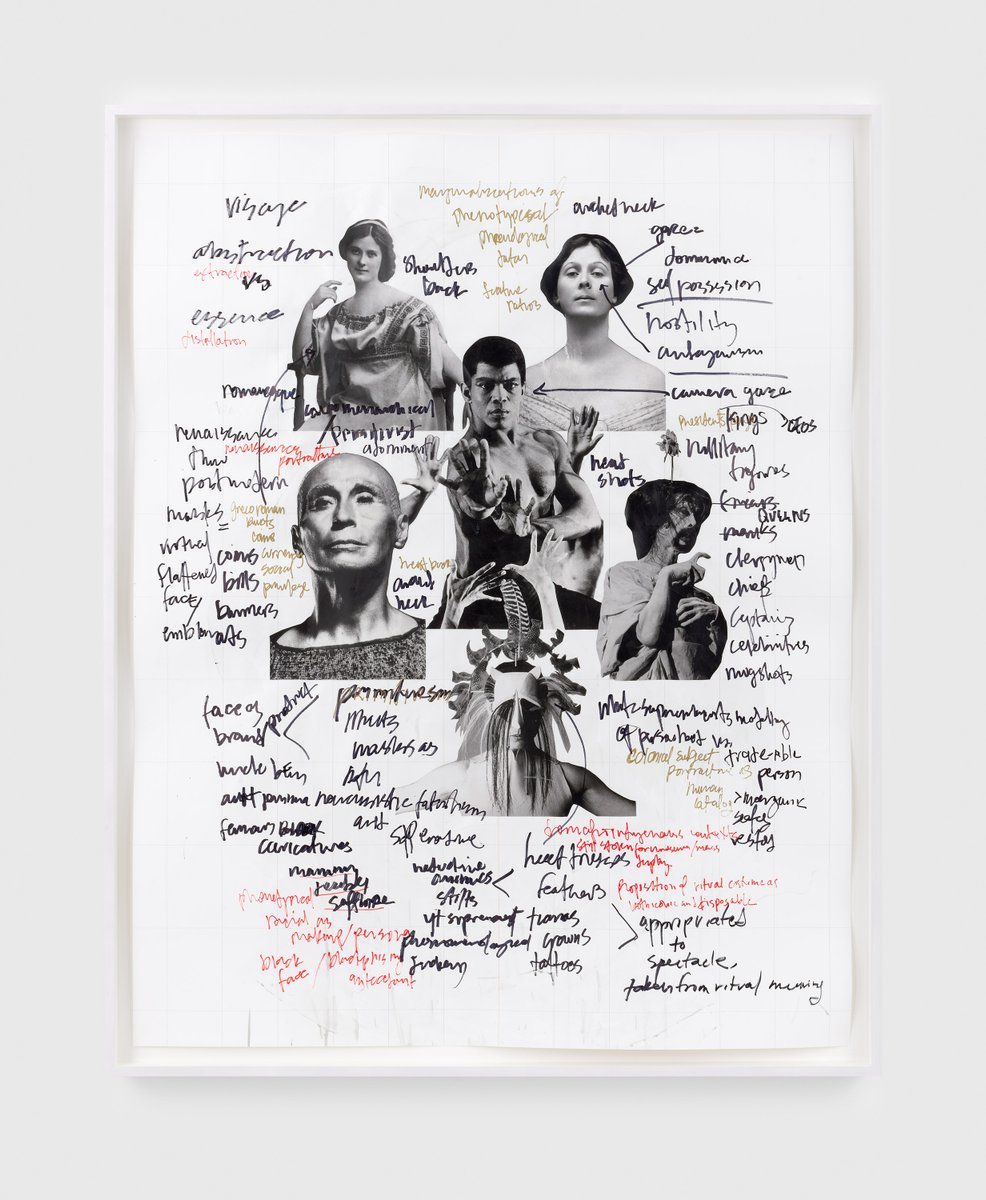
Kandis Williams, Visage, uses of portrait and mask from rulers to icons through Primitivism and phenotypical hierarchy, 2021. © Kandis Williams. Courtesy the artist and 52 Walker, New York.
“This is about the face as a performative space. I made a lot of notes here about coinage, flags, bannering, and about the tradition of colonial subject portraiture. The mask also holds a special space of fascination in modernist theater—it’s essentially the cannibalism of ritual and religious values reconstituted to serve the wearer of the mask. We can see the power of that appropriation today in the form of social phenomena like blackfishing and white passing.”
———
Black Box, 4 points: Ausdruckstanz and Körperkultur holds Orientalism, Primitivism, Islamophobia, and Anti Indigenous Ideologies
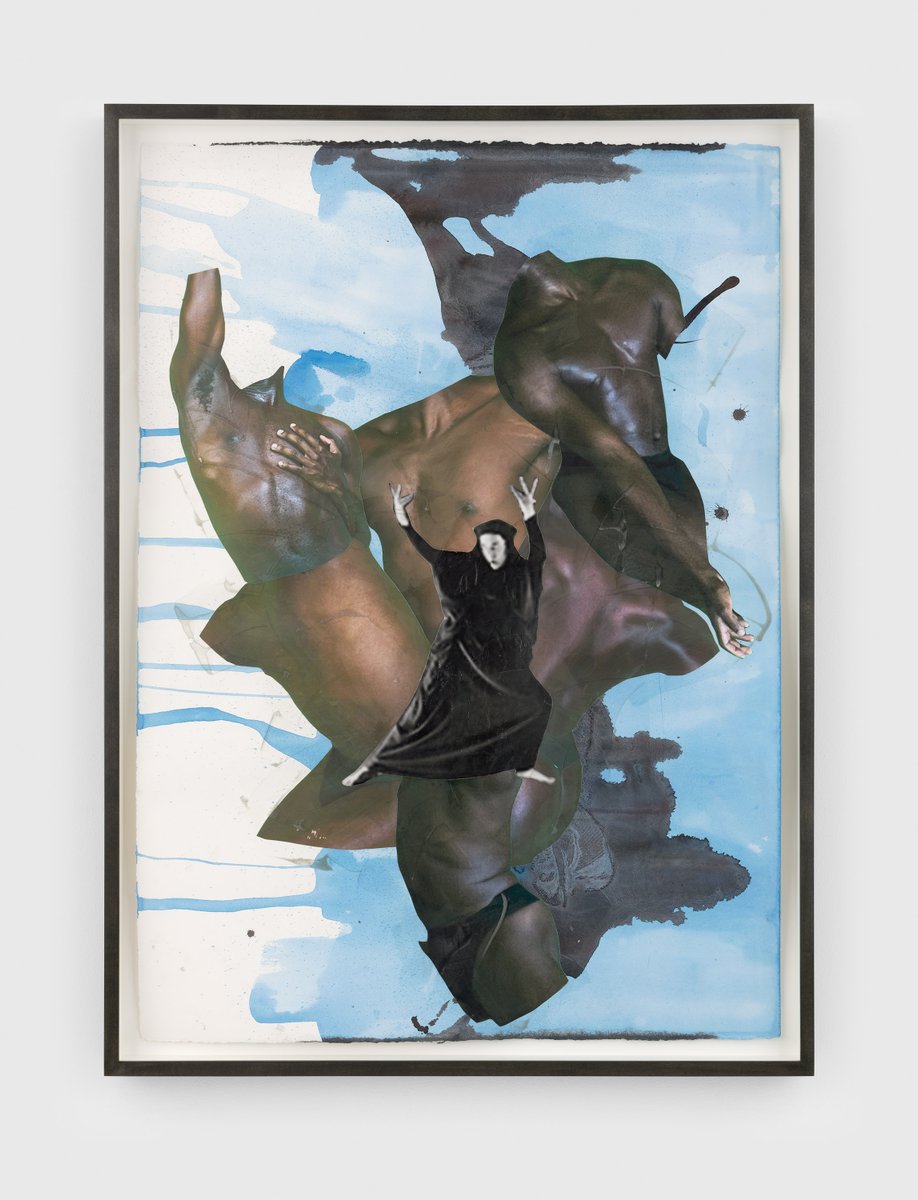
Kandis Williams, Black Box, 4 points: Ausdruckstanz and Körperkultur holds Orientalism, Primitivism, Islamophobia, and Anti-Indigenous Ideologies, 2021. © Kandis Williams. Courtesy the artist and 52 Walker, New York.
“Here I was thinking about how important Aryanizing the theater was to the Nazi regime. Their control of public spectacle was implemented via theatrical mechanisms still in use today. I often think about World Wars I and II as wars in which fascism was a shared ideology—the U.S. victory did not vanquish fascism. This is about the Black body as a racial construct—the drama of extracting, appropriating, and liquidating simultaneously.”
———
Genes, not Genius
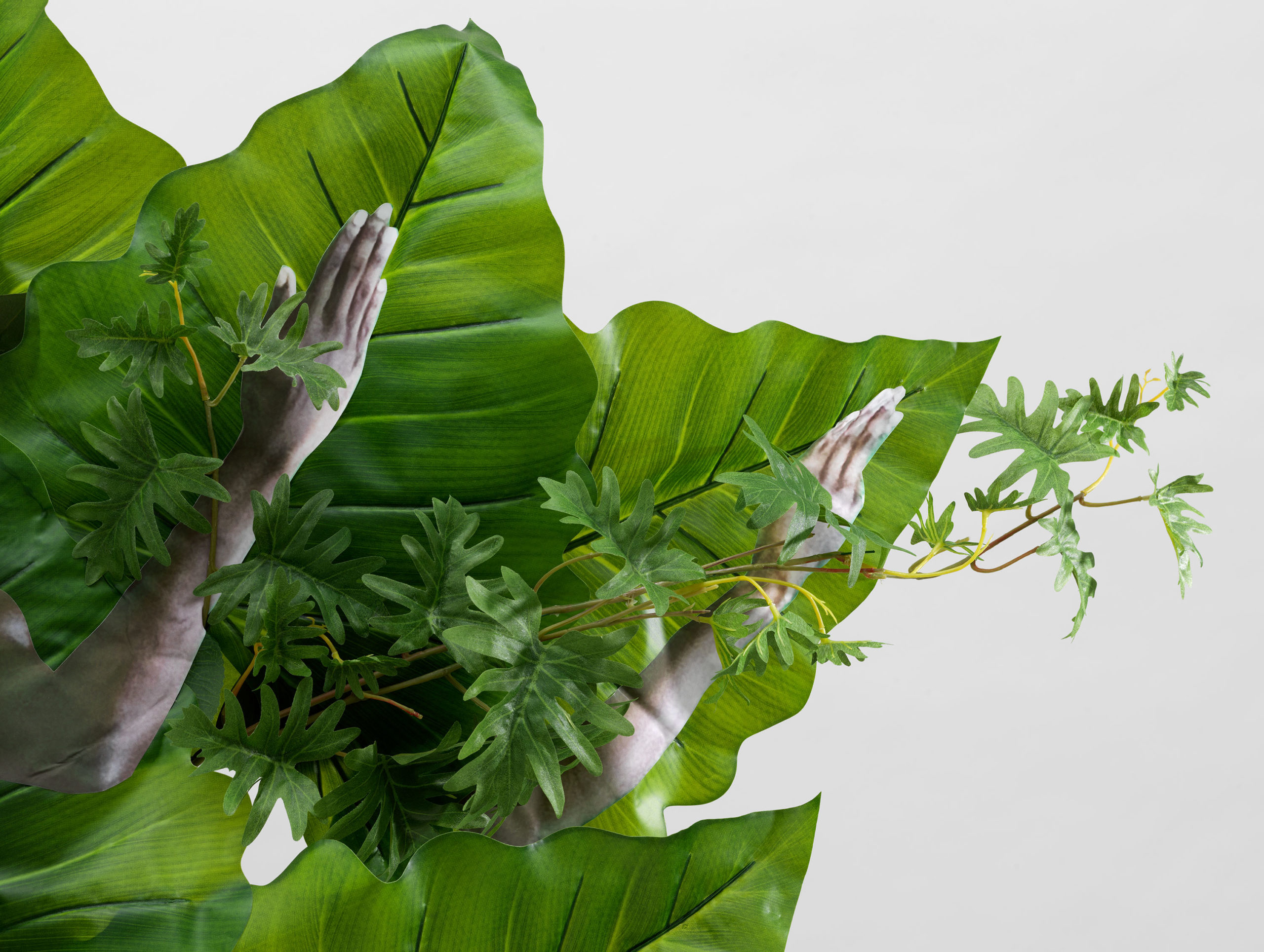
Kandis Williams, Genes, not Genius: The overlying purpose is to address how the social production of biologically determinist racial scripts—which extend from a biocentric conception of the human—can be dislodged by bringing studies of blackness in/and science into conversation with autopoiesis, black Atlantic livingness, weights and measures, and poetry. A biocentric conception of the human, it should be noted up front, refers to the law-like order of knowledge that posits a Darwinian narrative of the human—that we are purely biological and bioevolutionary beings—as universal; elegance is elimination, 2021 (detail). © Kandis Williams. Courtesy the artist and 52 Walker, New York.
“This is one of my favorites. The title, Genes, not Genius, is taken from readings of Brenda Gottschild’s book The Black Dancing Body: A Geography From Coon to Cool. Her goal is to set logic to how we see terms like coon and cool—she asserts that the fetish gaze moves from degradation to the sublime through objectification and fetishism.”

